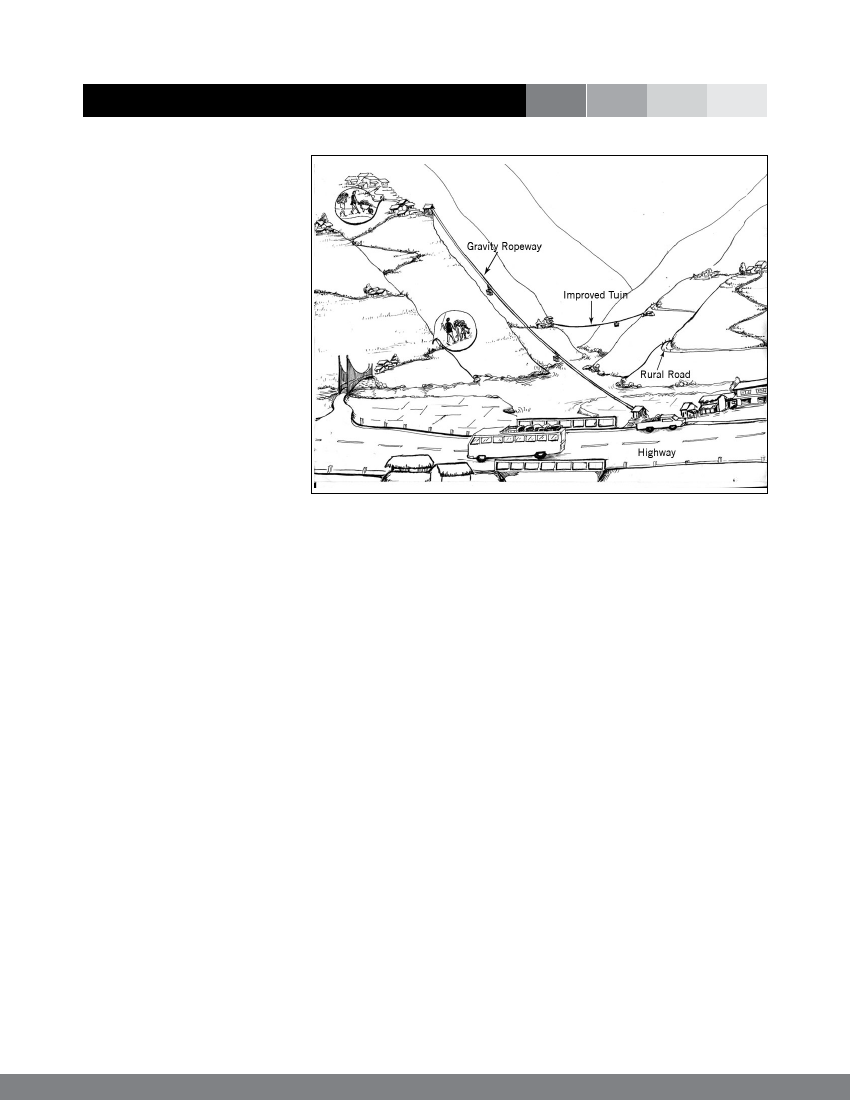
Introduction
1.2 Importance of Technology
Nepal is characterised by
its hills and mountainous
topography and highly difficult
hydrogeological conditions.
Eighty three per cent of the
country’s area consists of
mountains and hills. Difficult
terrain, poor accessibility
coupled to sparse and scattered
settlements is a major hurdle
in delivery of essential services
and rural development. Up to
the late 1950s, foot and mule
trails were the only means of
transport throughout Nepal.
Since then, efforts have been
made to connect various parts
of the country by developing
road networks. The efforts
Figure 4: Niche of ropeway on overall rural transportation scenario
largely remain inadequate
and progress is sluggish. According to road imperative to introduce a more affordable means
statistics, Nepal’s main strategic road network of transportation to lessen the burden and reduce
is about 18,828 km with a road density of 12 the frustration of the rural communities.
km per 100 km2 and the population served per
kilometre is therefore approximately 1400 (DOR, Gravityropeway,duetoitsintrinsiccharacteristics,
2006/07). In addition, there are about 5,000 is one of the promising alternatives to improve
km of village and agriculture roads, bringing the access in rural Nepal from the social, economic,
total road network to around 24,000 km. This geographical and environmental point of view.
however varies significantly in urban and rural This technology taps the comparative advantages
areas. About 60 per cent of this road network is of the mountainous and hilly terrains to overcome
concentrated in the plain areas of the country. their adversities. As it is relatively lower in cost
Earthen roads in the hills and mountains become in comparison to building roads and employs a
unsuitable for vehicular traffic during the rainy very simple technology, it is both affordable and
seasons. Unregulated plying of all kinds of heavy adaptable. Gravity ropeways neither require any
vehicles and inadequate maintenance make the external fuel or power nor are they polluting . The
roads unserviceable. Some six million people still operating costs are lower as compared to other
need to walk a minimum of four hours to reach technology such as building roads and rails.
the nearest road head.
The environment is less adversely affected as it
requires less construction works on the ground
In the present context when some district except for laying out of simple foundations to
headquarters still remains to be connected by anchor the ropes. It neither destabilises the
the road network, it is unlikely that the road mountain slopes nor spoils nature’s beauty and
network will expand to each remote settlements resources. Moreover, it causes no harm to the
of Nepal for several decades from now. So, it is existing ecology.
3